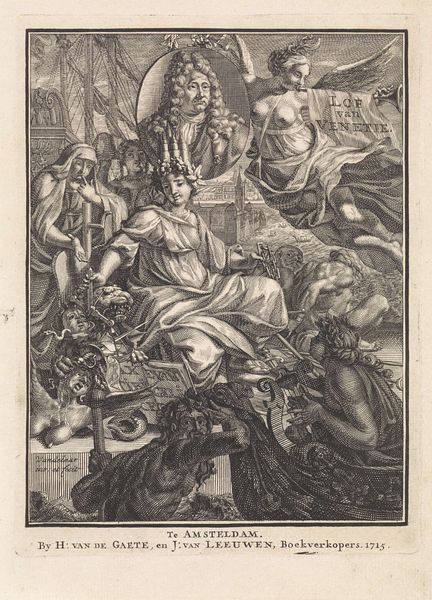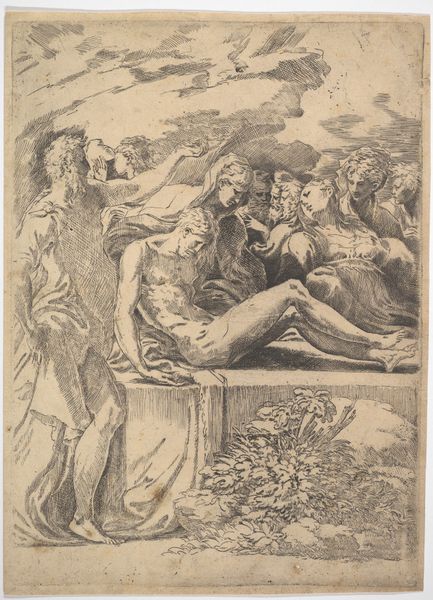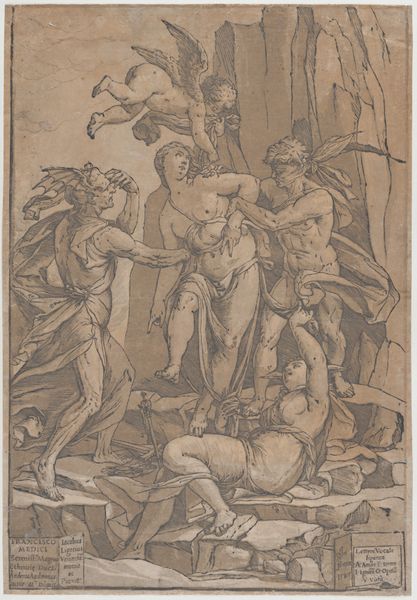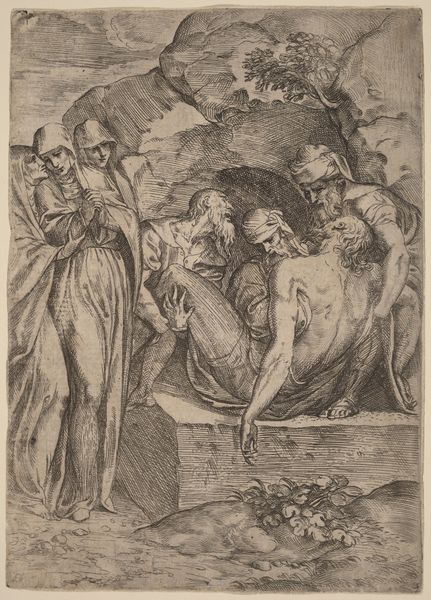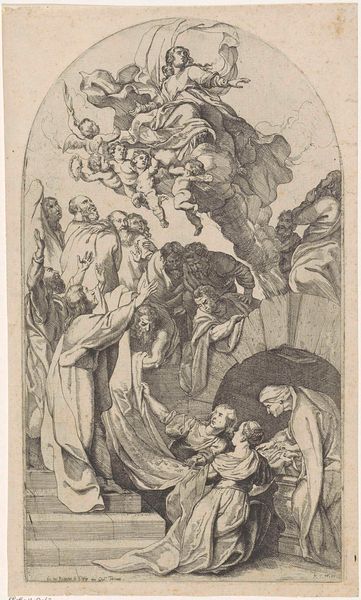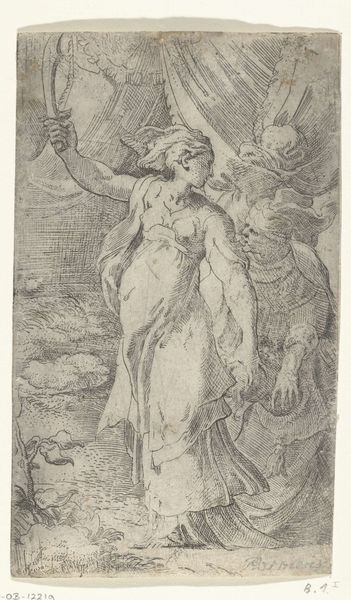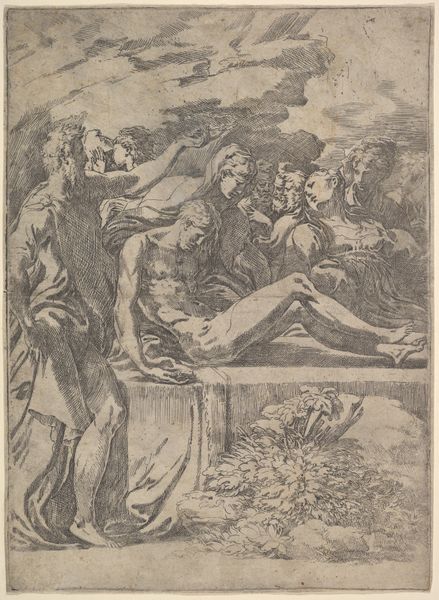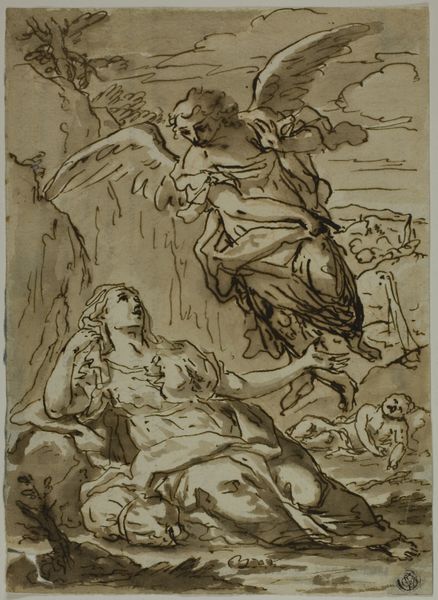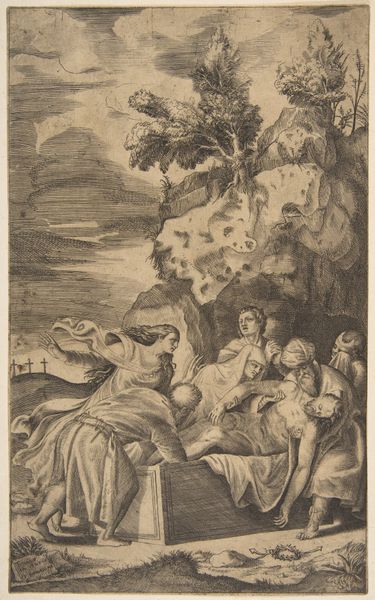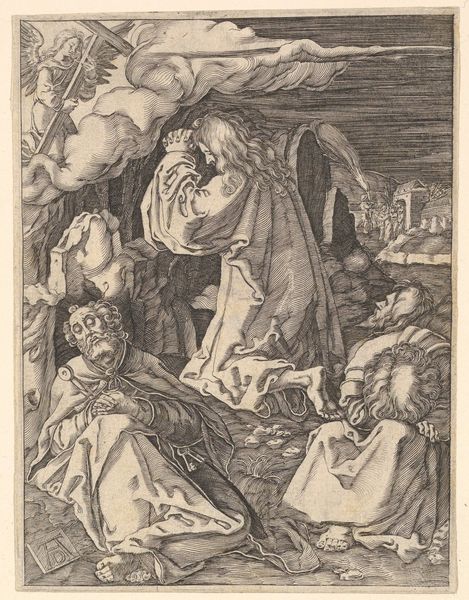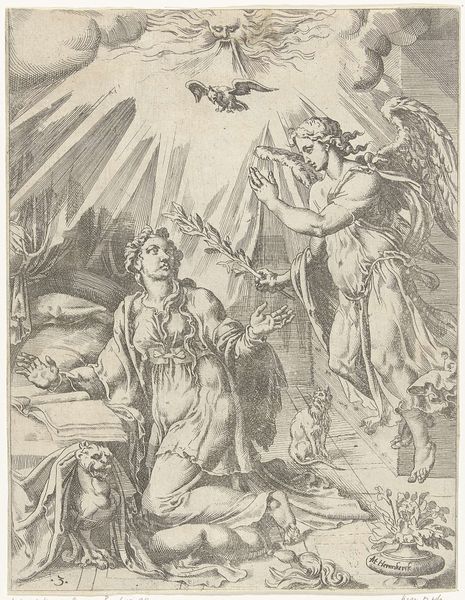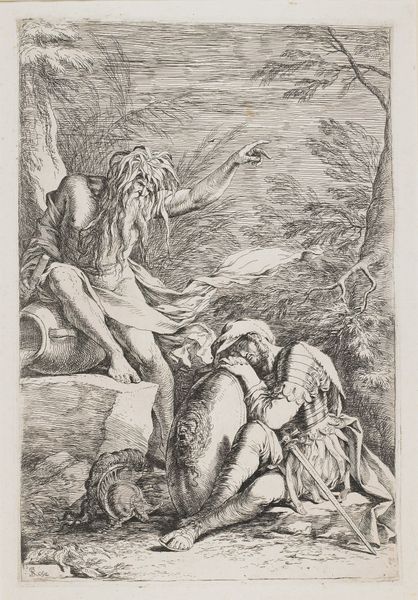
print, engraving
#
ink drawing
#
allegory
#
baroque
# print
#
figuration
#
line
#
history-painting
#
engraving
Dimensions: height 247 mm, width 199 mm
Copyright: Rijks Museum: Open Domain
Curator: This engraving, held in the Rijksmuseum, is titled "Triumph of Truth." Created in 1593 by an anonymous artist, it offers a compelling allegorical scene rendered in ink. Editor: It strikes me as a work steeped in dramatic tension, despite its monochromatic palette. The composition is densely packed, and the interplay of light and shadow amplifies a feeling of struggle and unveiling. Curator: Absolutely. Consider how Truth, central in the image, illuminated by divine light from above, contrasts with the figures representing rebellion and ignorance on either side and below her. There's a clear narrative of good versus evil at play. The dove, the angels, the symbols of scripture are all powerful representations of a certain dogma. Editor: The artist masterfully employs line work to delineate each figure, investing them with individual emotional weight. Truth’s serene posture, the contorted visages of the defeated, the detailed texture of the robes – they all convey psychological depth. The chaotic tumble of objects also generates a particular formal interest. Curator: Precisely. Notice also the iconographic weight of the symbols surrounding Truth – a chalice, scriptures, and even figures representing Catholic Obedience. These draw upon well-established cultural associations, imbuing the print with a complex layer of meaning resonant to contemporary viewers of the baroque era, deeply entrenched in religious debate and ideological struggle. Editor: For me, the most compelling formal device here is the contrast between open and enclosed spaces. The figures almost burst from the picture plane, juxtaposed against tightly controlled line work. The artist makes considered use of available compositional tools to generate intense dynamism. Curator: Looking closely at the subjugated figures, the serpent of rebellion and the defeated ignorance clutching a globe, it becomes clear how the artwork represents very specific anxieties related to heresy and the fragility of knowledge. Editor: It is a fascinatingly intricate image. Thanks to your insightful reading, it feels very different now compared to my initial assessment of the artwork. Curator: It's interesting to note how form can communicate, especially in times of cultural transformation.
Comments
No comments
Be the first to comment and join the conversation on the ultimate creative platform.
